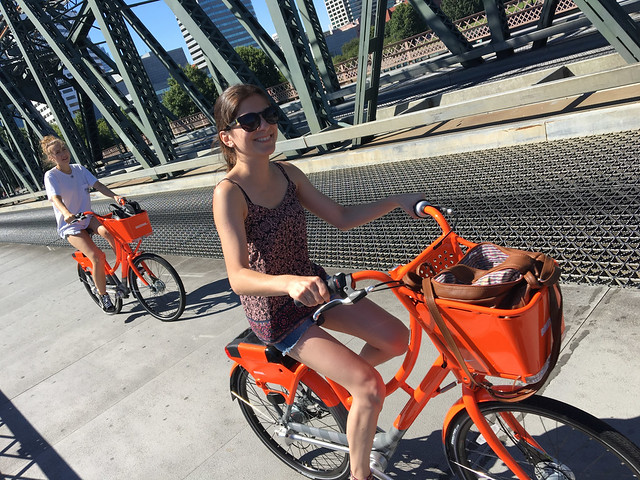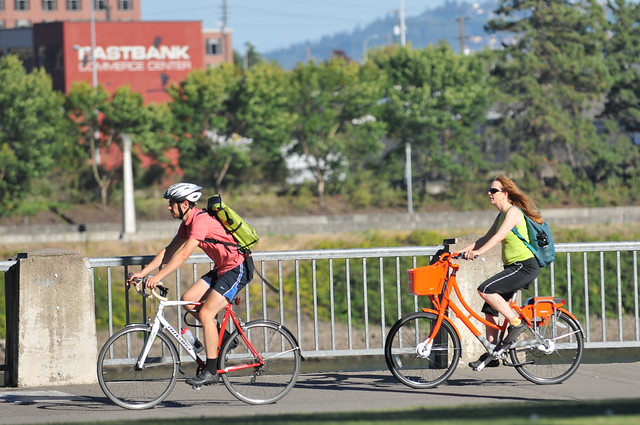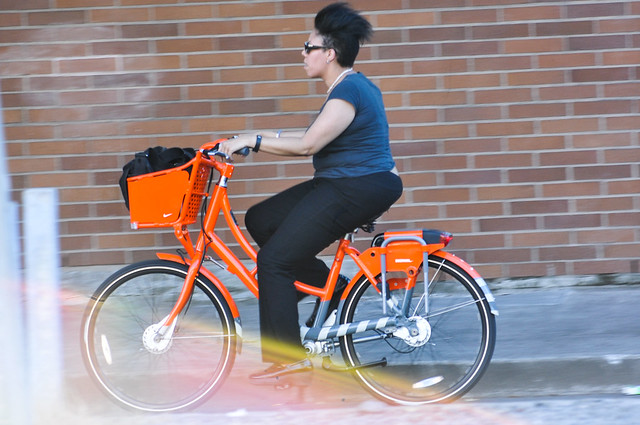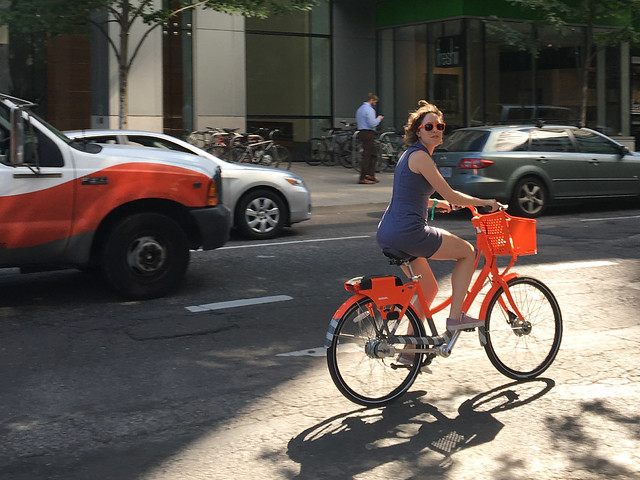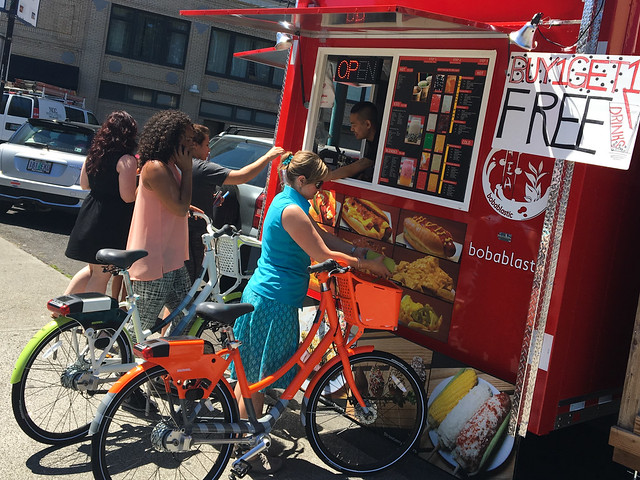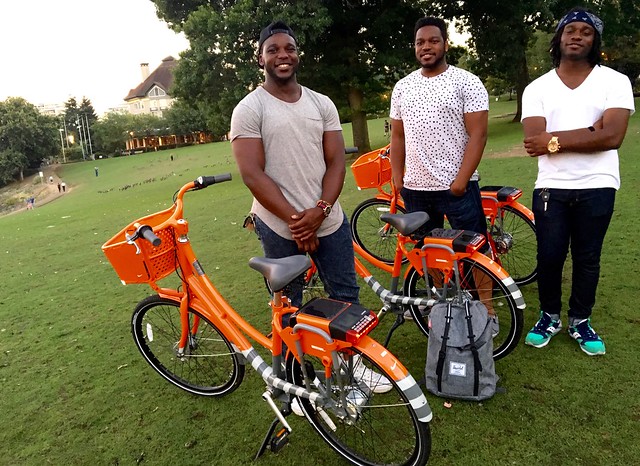
(Photos: J Maus/BikePortland)
This article is by Jessica Roberts, a principal at Alta Planning + Design and resident of north Portland. She previously wrote about a local bike racer and infrastructure on North Williams Avenue.
To the average Portlander, it must look like they just dropped from the sky overnight. Or perhaps like an exotic fungus that sprang up from the ground over a particularly rainy summer evening. I’m talking, of course, about one thousand bright orange Biketown bikes that have already – just one month into the program – become nothing short of cultural phenomenon.
How could a simple fleet of bright orange bikes make this big of a difference?
Sasquatch has ridden one. So has a Trailblazer (whose Instagram video received over 34,000 views) and a Grimm star. One woman learned to ride a bike on one. And at this point, the question might not be whose dog has ridden in a basket, it might be whose dog hasn’t. Social media posts are full of statements like “Maybe the most fun I’ve had in a year!” “These bikes put a smile on my face,” and “This. Is. Awesome!” In the first three weeks alone, bikes were ridden over 108,000 miles.
Take a moment to let that sink in. And ask yourself: when was the last time your city did something for bikes that made such an immediate and positive impact? Thanks to Biketown, the image of bicycling has changed, seemingly overnight, from being an insiders-only activity to something that everybody – elected officials, tourists, construction flaggers, conference attendees, first dates, visiting family members, businesspeople – wants to do.
Now ask yourself: How does this even make sense? It just isn’t that hard, or that expensive, to get a bike. Most people already know how to ride a bike. And in lots of US cities, the infrastructure is getting better every day. So how could a simple fleet of bright orange bikes make this big of a difference?
Behavioral economists have an answer, so I invited Elizabeth Linos of the Behavioral Insights Team (BIT) to help me make sense of Biketown’s massive impact. Her job is to figure out the deep, and often invisible, factors that actually cause people to change their behavior – not what they think, or what they wish, but what actually is going on in their brains. And she does that with science, naturally.
BIT has come up with a way to talk about the science of behavior change, using something they call the EAST framework. To summarize: to help people try a new behavior, you must make it Easy, Attractive, Social, and Timely. These very factors explain how bike share can be so revolutionary.
But first, let’s take a look at who’s riding Biketown…
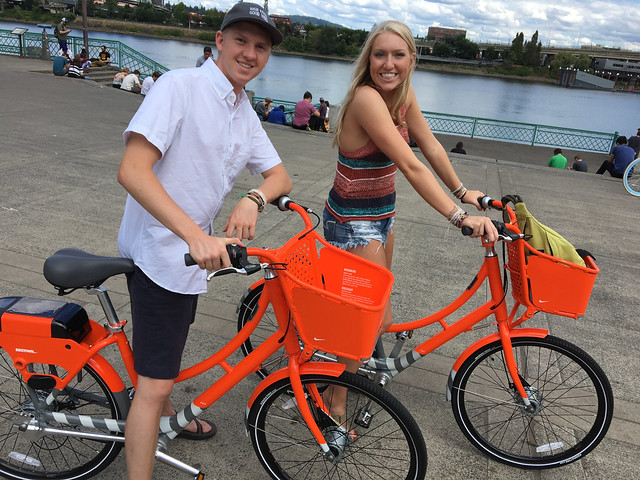
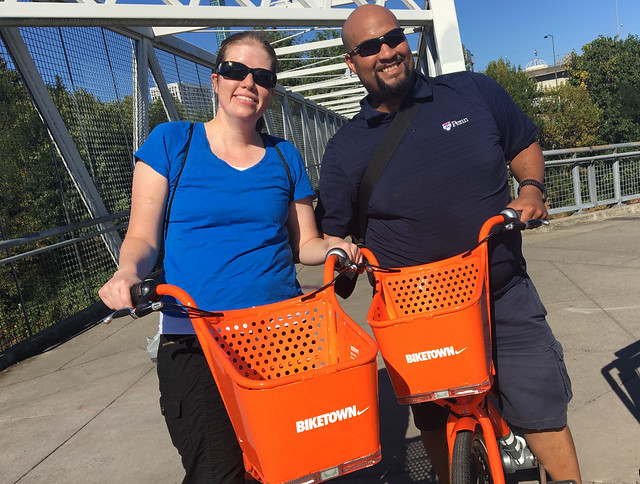
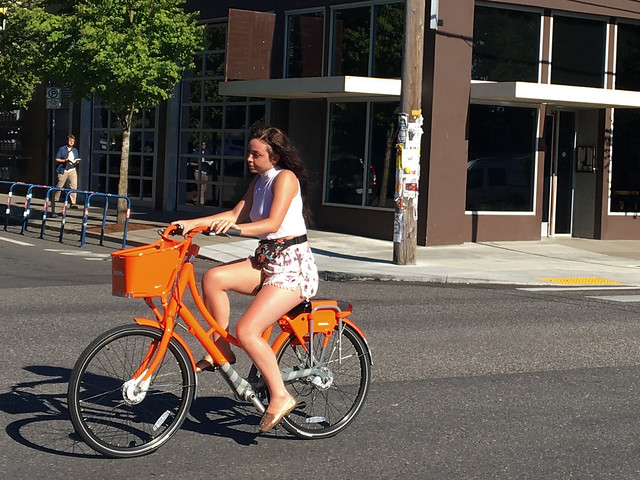
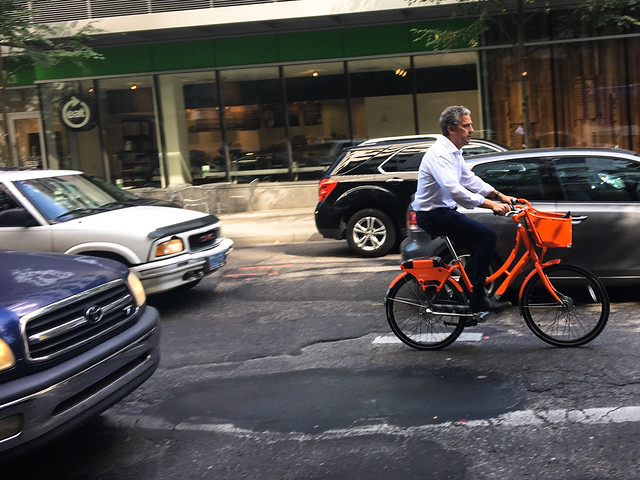
OK, as I was saying, the BIT talks about the science of behavior change via the EAST framework. To help people try a new behavior, you must make it Easy, Attractive, Social, and Timely.
Make it Easy: Biketown is easy. It’s easy to sign up on your smart phone. It’s easy to find a bike thanks to a well-designed mobile app, and because you can’t turn a corner without finding one. It’s easy to type in your code and bike off. It’s easy to carry stuff (basket!) and not worry about gear (no helmet law, no greasy chain, and the lock is built in!). All of these factors reduce the barriers to giving the service a try.
Make it Attractive: Whether you like the color orange or not, you can’t deny that the impact of 1000 bikes are eye-catching. The bikes are stylish and fun, and the official and user-generated social media output feels appealing and current. An attractive system is more likely to inspire people to take action.
Make it Social: Between the bright color, the social media frenzy, and the impact of seeing dozens of smiling folks on every time you’re out and about, you really feel like “everybody else is doing it – I don’t want to be left out!” This feeling – shall we call it Biketown FOMO (fear of missing out)? – has been shown to be a powerful motivator to get on board.
Make it Timely: Even if everything else had gone well, a January launch would not have led to immediate headlines like this one. By launching the program in the summer, people would have the ideal weather to try it out, are more likely to see other people using it, and are more likely to be on vacation or at least in a relaxed frame of mind. Launching at the right time set the program up to be an immediate success.
Linos understands that these factors all work together to make bike share the ultimate vehicle for change. She says, “The launch of bike share shows that cities can often nudge people into better health and more sustainable transport without always relying on regulation or law.”
Thanks to a system that follows the EAST principles, ordinary people in our city – ones who don’t think of themselves as “bike people” at all – see Biketown bikes everywhere, perceive that it’s fun, normal, and desirable, and find it easy and rewarding to sign up and get on a bike. If we want to make our cities better places, we just need to make all of our programs as easy, attractive, social, and timely as Biketown.
– Jessica Roberts, @jessicaroberts
Jonathan Maus and Ted Timmons contributed reporting to this story.
BikePortland is supported by the community (that means you!). Please become a subsriber today. You can also make a one-time donation here.


